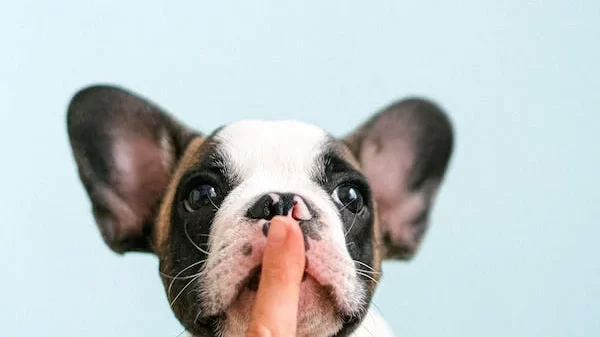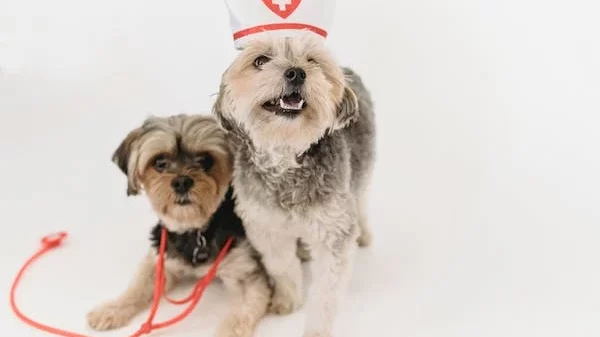We love our pets, but sometimes they can seem like a mystery to us. They wag their tails or purr contentedly, but what are they really trying to tell us? Understanding your pet’s body language is one of the most important ways you can communicate with them and build a strong bond. In this guide for pet owners, we’ll delve into the fascinating world of animal communication and help you decode your furry friend’s signals. With a little knowledge and observation, you’ll be able to read your pet like a pro and deepen your connection in ways you never thought possible!
Introduction to Animal Body Language
Animals communicate with each other through body language. This is especially true for dogs and cats, who often use their tails, ears, and eyes to send messages. By understanding your pet’s body language, you can better interpret their needs and wants.
Tails are one of the most important tools that animals use to communicate. A dog wagging its tail can mean anything from happiness and excitement to fear and anxiety. Pay attention to how your dog’s tail is moving – is it wagging slowly or rapidly? Is it held high or low? Ears are another key indicator of an animal’s mood. Dogs and cats will often erect their ears when they’re feeling alert or aggressive. If your pet’s ears are flattened against their head, they may be feeling scared or submissive.
Eyes are also very important in animal communication. Animals will often widen their eyes when they’re frightened or excited. If your pet is looking at you directly with a soft gaze, they’re likely trying to bond with you. However, if their gaze is hard and direct, they may be challenging you for dominance.
Common Signs of Stress and Anxiety in Pets
Pets can experience stress and anxiety for a variety of reasons, just like people. Some common signs that your pet may be feeling stressed or anxious include panting, pacing, restlessness, vocalization (whining, barking, meowing), shaking or trembling, hiding, excessive grooming (licking or chewing), and changes in appetite. If you notice any of these behaviors in your pet, it’s important to take steps to help them feel more comfortable and relaxed.
There are a number of ways to help reduce your pet’s stress and anxiety. Providing them with a safe and comfortable environment is important. Make sure they have plenty of space to move around, access to their favorite toys or activities, and a place to hide if they want to retreat from the world for a while. Creating a routine for your pet can also be helpful – set times for meals, walks, playtime, etc. And finally, spending quality time with your pet every day can go a long way in helping them feel loved and secure.
Different Types of Tail Wagging
There are many different ways that your pet can communicate through their tail wagging. The following are a few different types of tail wags and what they might mean:
1. A slow, relaxed tail wag often indicates that your pet is happy and content.
2. A fast, excited tail wag usually means that your pet is eager and ready to play or go for a walk.
3. A stiff, hard tail wag with the body low to the ground can be a sign of fear or submission.
4. A tail held high in the air with a very stiff body is often a sign of aggression or dominance.
5. If your pet’s tail is tucked between their legs, this usually indicates they are feeling scared or nervous.
How to Interpret Your Pet’s Facial Expressions
When it comes to understanding your pet’s body language, facial expressions can be some of the most telling. Just as with humans, a pet’s face can convey a range of emotions, from happiness and excitement to fear and anxiety.
Here are some common pet facial expressions and what they might mean:
Happy/Excited: A happy or excited pet will often have its mouth open slightly, with its tongue hanging out. The eyes will be wide open and the ears will be up and alert. This is your pet’s way of saying that it’s ready to play or go for a walk!
Fearful/Anxious: A fearful or anxious pet will have its mouth closed tight, with the lips pulled back. The eyes will be wide open and the ears may be flattened against the head. This is your pet’s way of saying that it’s feeling scared or threatened. If you see your pet displaying these signs, try to remove whatever is causing the fear or anxiety.
Submissive/Nervous: A submissive or nervous pet will often have its mouth open slightly, with the tongue hanging out. The eyes will be wide open but not focused on anything in particular, and the ears may be flattened against the head. This is your pet’s way of saying that it’s feeling overwhelmed or submissive. If you see your pet displaying these signs, try to provide reassurance and calm it down.
What Does it Mean When Your Pet’s Licks You?
What does it mean if your pet licks you? Generally, licking is a sign of affection. Your pet may lick you to show love or as a way to ask for attention. If your pet licks you excessively or in an inappropriate way (e.g., on your face), this may be a sign of anxiety or insecurity. If you’re not sure why your pet is licking you, it’s best to consult with a veterinarian or animal behaviorist.
Understanding your Pet’s Scratching, Digging, and Biting Behaviors
When our pets exhibit certain behaviors, it can be difficult to understand what they’re trying to tell us. Scratching, digging, and biting are all common behaviors that can be interpreted in different ways. Let’s take a closer look at each of these behaviors and try to understand what they mean.
Scratching: Scratching is a common behavior that can have many different meanings. It could be a sign that your pet is feeling itch relief, or it could be a way of marking their territory. If your pet is scratching excessively, it could be a sign of allergies or fleas. If you’re unsure why your pet is scratching, it’s best to consult with your veterinarian.
Digging: Digging is another common behavior that can have multiple meanings. Your pet may be looking for food or trying to bury a bone. If your pet is constantly digging in the same spot, it could be a sign that they’re bored or anxious. Try providing them with toys or puzzles to keep them occupied, and if the digging continues, consult with your veterinarian.
Biting: Biting can be a normal part of play for some pets, but it can also be a sign of aggression. If your pet is biting you or other people, it’s important to seek professional help from a trainer or behaviorist. They will be able to help you identify the root cause of the problem and provide you with solutions on how to stop the biting behavior.
Tips for Interpreting Your Pet’s Body Language
As a pet owner, it’s important to be able to understand your pet’s body language. After all, they can’t tell you how they’re feeling in words! But don’t worry – with a little bit of observation, you can start to interpret what your pet is trying to say.
Here are some tips for interpreting your pet’s body language:
– Pay attention to their tail. A wagging tail usually means your pet is happy, but a tails between their legs can indicate fear or anxiety.
– Observe their ears. Ears that are pointing forward usually signal that your pet is alert and interested in something. Ears that are flattened back against the head can mean fear or aggression.
– Watch their eyes. Eyes that are wide open and staring might signal aggression, while softly blinking eyes often indicate relaxation.
– Take note of their mouth. A dog that is panting heavily might be overheated or stressed, while a dog with its mouth open and tongue hanging out could be trying to cool down. A dog that is baring its teeth is usually doing so in aggression.
By understanding these simple cues, you’ll be able to get a better idea of how your pet is feeling at any given time. Just remember – every animal is different, so take the time to get to know your own pet’s individual body language!
Conclusion
Knowing and understanding your pet’s body language is a great way to deepen the bond you have with them. As pet owners, it is important that we take time to learn what our pets are trying to communicate with us through their body language. Once you do so, you will be able to pick up on subtle cues that may indicate when they are uncomfortable or happy, helping you create an even stronger connection with your companion. With this knowledge in hand and some practice, soon enough you’ll be reading your furry friend like a book!










